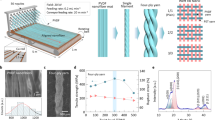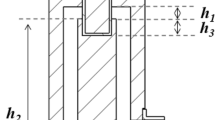Abstract
A DIFFICULTY was experienced recently in carrying out some electrical tests on enamelled wires at temperatures up to about 120° C. Pairs of wires were twisted together in accordance with B.S. Specification 156, Appendix A, and although it was possible to obtain all the required electrical properties at atmospheric temperatures, this was not so with some classes of enamel when the same tests were attempted in rising temperatures. As changes in power factor were being followed, a relatively high voltage between wires was used (about 1.2 kV.), and it was found impossible to avoid premature breakdown of some classes of enamel when the temperature was raised rapidly. Evidently a means of controlling the voltage applied between wires was wanted so that as the temperature rose, the voltage would fall off; but it was not practicable to do this accurately and quickly enough with ordinary hand control.
This is a preview of subscription content, access via your institution
Access options
Subscribe to this journal
Receive 51 print issues and online access
$199.00 per year
only $3.90 per issue
Buy this article
- Purchase on Springer Link
- Instant access to full article PDF
Prices may be subject to local taxes which are calculated during checkout
Similar content being viewed by others
Author information
Authors and Affiliations
Rights and permissions
About this article
Cite this article
MACDONALD, H., SCARFE, E. A New Method of Electrical Testing, Applied to Insulated Wires. Nature 152, 51–52 (1943). https://doi.org/10.1038/152051c0
Issue Date:
DOI: https://doi.org/10.1038/152051c0
Comments
By submitting a comment you agree to abide by our Terms and Community Guidelines. If you find something abusive or that does not comply with our terms or guidelines please flag it as inappropriate.



